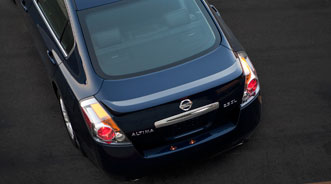Nissan Plants Near Full-Production Capability

Especially for franchise dealers awaiting more inventory, Nissan shared some encouraging news late last week. All of its factories across Japan are now online. They’re ramping up production, and output is increasing as the two-month anniversary approaches marking the devastating earthquake and tsunami.
In Tochigi, Japan, the largest of the three main assembly plants where Nissan makes GT-Rs, Infiniti Ms and other models, company officials said factory lights are back on, and production is gearing up.
The plant located about 100 km or 62 miles north of Tokyo began making units in 1971 and produces many top sport and luxury vehicles.
“Everything is fixed and ready now. It is just an issue of parts supply that is holding us back from full production,” stated Hiromi Takaoka, general manager at Nissan Tochigi Plant.
“If everything is prepared, we are ready to resume production to 100 percent or even more,” Takaoka projected. “Through this earthquake, we have learned that everything is possible if we join our forces together. Nothing is impossible, and we won’t let this earthquake beat us.”
Closer to the company’s Yokohama headquarters is the Oppama plant where more than 3,000 staff member make up to 480,000 vehicles a year, including the Nissan LEAF.
Meanwhile, on the western Japanese island of Kyushu, some 3,600 staff make Serenas, Muranos and other vehicles.
“In Kyushu, there was no direct damage to our facility. However, production was suspended because the parts supply was halted,” Nissan Kyushu Plant general manager Yukinobu Kodama pointed out.
Kodama recapped that operations resumed April 13, and, “We’ll do our utmost to be back on full production so that we can deliver the highest quality cars to those customers waiting all over the world.”
Despite the earthquake and tsunami, officials highlighted that global Nissan production still hit an all-time high in the last business year, rising 24.5 percent to 4.21 million units.
They went on to mention Japanese output alone rose 4.6 percent to hit 1.07 million units as demand for the Juke, Rogue and Infiniti QX56 took off.
As recovery takes hold in coming months, the automaker insisted all Japan staff will be essential to meet demand, particularly from the quake-stricken Tohoku region in Japan.
Estimates are that up to 10 percent of vehicles in prefectures such as Miyagi have been damaged or destroyed in the wake of the disaster, raising the need for new production ahead.
After the tragic events of March 11, Nissan acknowledged that its output in Japan fell 52.4 percent and its exports 12.5 percent during the month. Compared to Toyota and Honda whose March output each fell about 62 percent, Nissan officials emphasized their decline was not as great, “but all Japanese automakers have been hit by limited parts access.”


